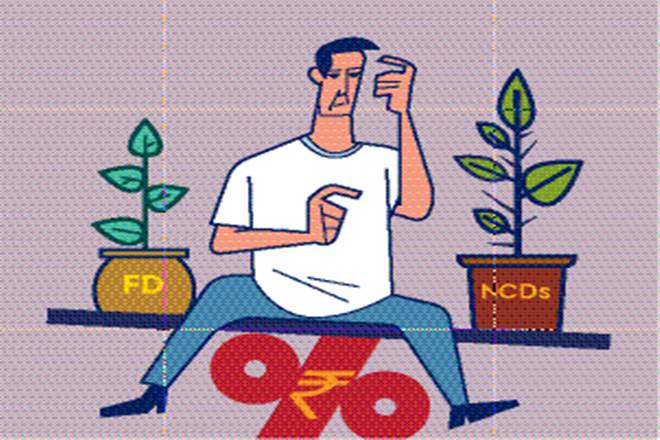As interest rates of fixed deposits stagnate, individual investors are looking at non-convertible debentures (NCDs) to earn higher returns. Recently, L&T Finance Ltd came out with an NCD, the first in a decade, which was oversubscribed. The NCDs were for maturity periods of 37, 60 and 120 months. The coupon of the debentures ranged from 8.75% to 9.35% and were rated AA+ by Brickwork Ratings and AA by CARE.
Companies such as Muthoot Finance offered 10% coupon and Indiabulls Consumer Finance offered 11%. There rates are much higher than 6.85 to 7.5% interest rates offered by banks on fixed deposits for tenure of five years and above. Experts say individual investors prefer NCDs of companies with strong financials. Companies in the non-banking space with higher asset-liability mismatch carry higher risk of default.
At the time of public issue NCDs, an investor can buy the bonds by submitting a physical form with the details of PAN and identity. One can also invest online through demat account.
NBFCs back with NCDs
The fund raising challenges of non-banking financial companies (NBFCs) because of asset-liability mismatch seem to have eased marginally. In January, there was an uptick in the share of corporate bond issuances by the NBFC sector reflecting renewed confidence among issuers and investors. In fact, the proportion of fresh corporate bond issuances by NBFCs saw a notable decline from 71.6% in July last year 64.6% in August. In January, according to a CARE Ratings study, it rose to 82.2% of the corporate bond issuances.
The CARE study shows that there is more volatility in the changes in the corporate bond yields in comparison with bank rates. For AAA category, the yields which rose by around 78 basis points in October last year have seen a month-on-month decline in the following three months. The yields have declined by 37 basis points from 9.24% in October last year to 8.97% in January this year.
Be cautious of higher rates
If an investor is looking at NCDs with higher interest rates, then he must also keep in mind that NCDs carry a higher credit and liquidity risk than bank deposits. Though NBFCs may have hit the market with fresh debentures, many are facing liquidity crisis and even companies with higher rated paper are defaulting. Investors must check the credit rating of the issuer before investing and keep a tab on the ratings as long as one stays invested. For instance, IL&FS was downgraded to D rating, from the highest AAA in less than two months.
In fact, NCDs are costly instruments to raise money from the public. Cash-strapped companies often resort to NCDs with higher rates to lure investors. In NCDs, the investor’s exposure is to a single company and any default may wipe out the entire capital invested. As NCDs are not liquid, it is not easy to sell the bonds even in the secondary market as trading remains very thin. Investors should look at secured NCDs which will reduce the risk significantly in case of a complete default. Also, companies that resort to NCDs for short- to medium-term borrowing have lower risk of defaults compared to those who borrow long-term through debentures.
For now, look at secured NCDs only
Non-convertible debentures are of two types —secured and non-secured. The secured ones are backed by assets, wherein if the company is unable to fulfil its obligations, the assets are liquidated to repay the investors. Companies offering secured debentures pay lower coupons than non-secured ones. In case of unsecured NCDs, in case the company defaults or faces liquidation, investors will simply lose the money invested.
Experts say though NCDs can be a good for portfolio diversification, one should not invest more than 20% of total portfolio in company fixed deposits or NCDs because of higher risk and poor liquidity as compared to bank deposits and debt mutual funds.


